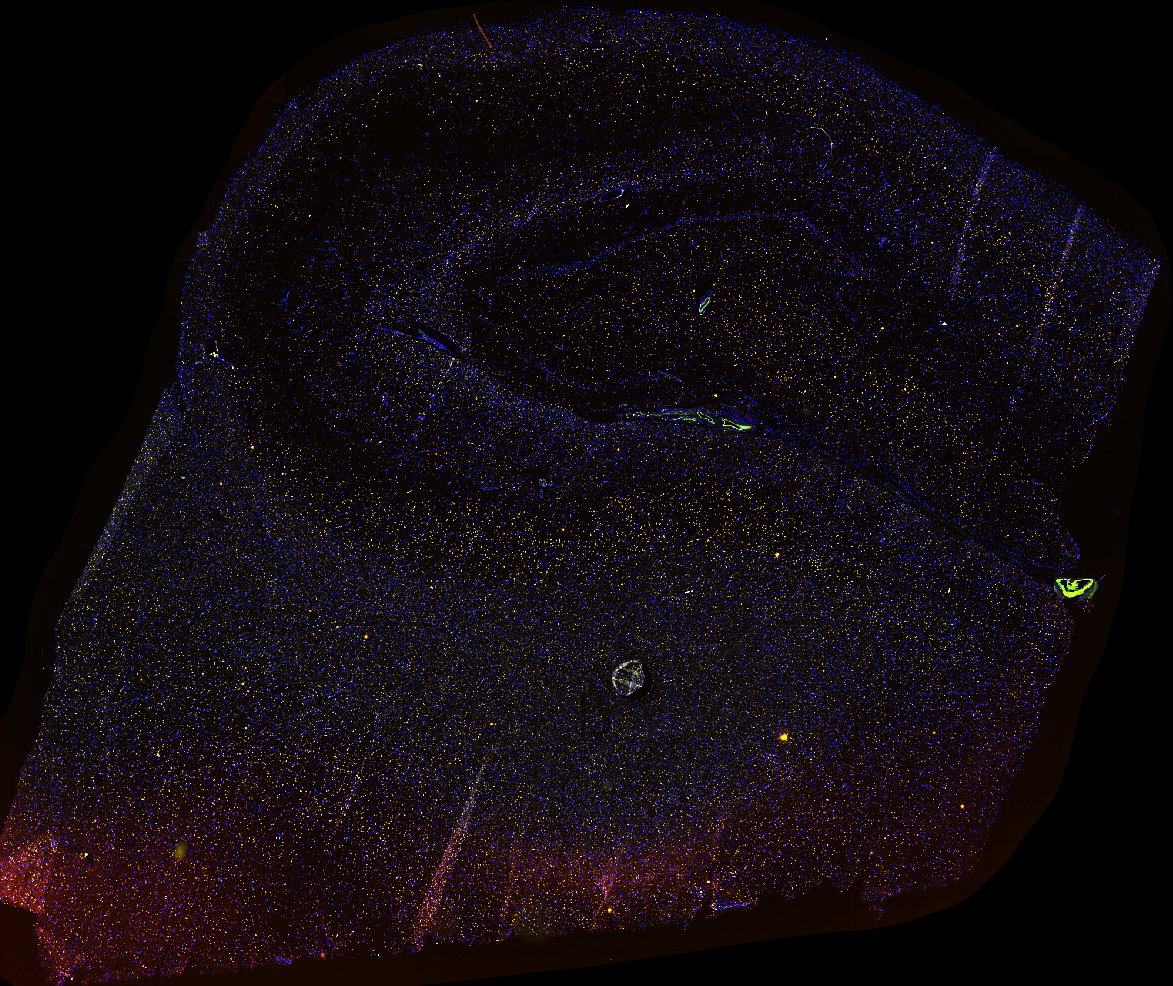Illustration (click to hide):

Project Description
The entorhinal cortex is especially relevant for Alzheimer’s disease (AD) pathology. AD initiates in this region at the earliest disease stages, even before the first clinical symptoms appear. Within the entorhinal cortex, layer II excitatory neurons are the first to degenerate. Understanding the mechanisms that lead to the early degeneration of these neurons could be essential to develop efficient disease modifying drugs. However, the lack of a systematic characterization of neuron subpopulations in the human entorhinal cortex hampers the analysis and interpretation of single-nucleus RNA sequencing (snRNA-seq) data, that usually identify a variety of excitatory neuron subclusters with unknown neuroanatomical location. By using snRNA-seq we determined specific gene signatures for 25 different excitatory neuron subpopulations and 17 inhibitory neuron subpopulations. We used this information to design 200 specific probes to analyze their spatial location in the human entorhinal cortex by in-situ sequencing.
Project Information
-
BIIF Principal Investigators
- Christophe Avenel
External Authors
Patricia Rodriguez Rodriguez, Jean-Pierre Roussarie -
Date
2022-06-01 🠚 Current